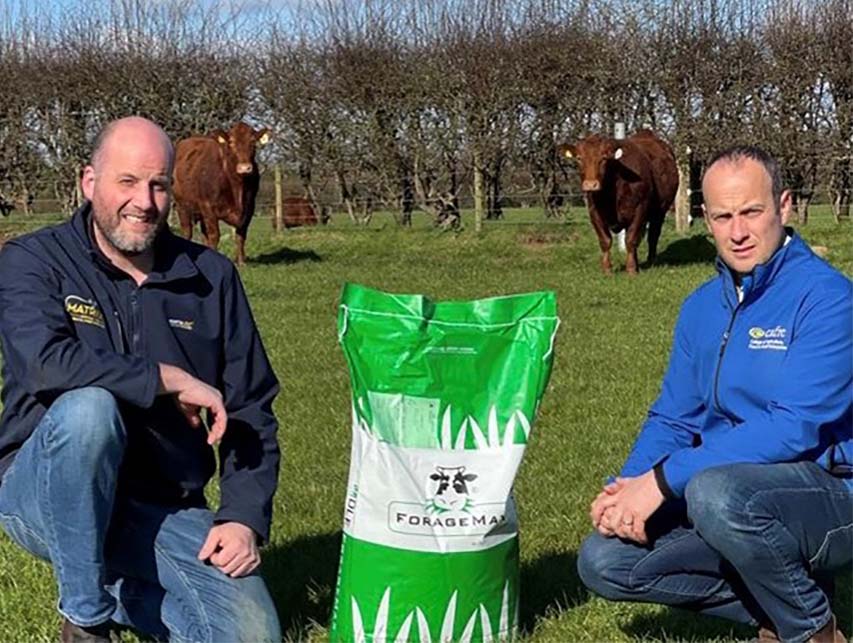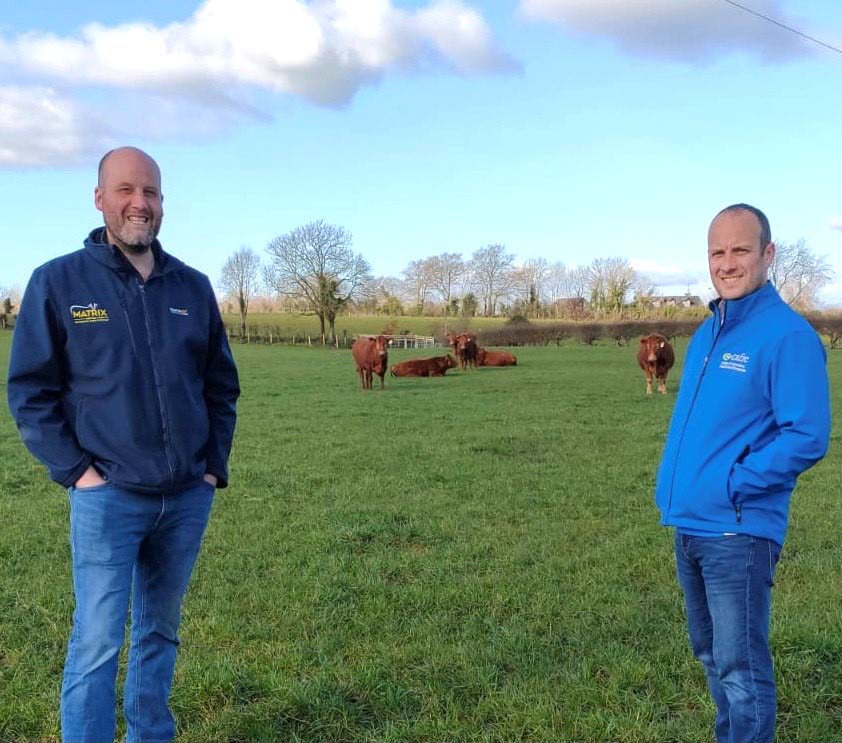Clover can help insulate against increased feeding costs for cattle and sheep
With fertiliser prices at a record high, members of CAFRE Beef and Sheep Business Development Groups (BDG) facilitated by CAFRE Adviser Stephen Flanagan have started to look at alternative systems and products to keep grass production at the optimum level to support current stocking rates.
Stephen Flanaghan said: “One product in particular which is getting a deserved renewal of interest and which has been about for generations is the humble clover plant!
The simple clover plant has a lot to offer the Beef and Sheep farmer:
- Improved animal performance due to improved nutritional composition – Research has shown that lambs have the potential to grow 25 % faster on grass clover swards and cattle 10 % better than on grass only swards. Palatability is also improved with white clover in the sward leading to higher intakes.
- AFBI research has shown that under ideal conditions clover can fix up to around 150 kg of nitrogen per hectare (equivalent to almost 4.5 cwt of 27%N /acre) when there is at least 30% clover content – under farm conditions this level may not always be achieved but it is free nitrogen nonetheless that cannot be ignored.
- Clover improves the soil structure as the root system of the white clover plant produces more gaps between soil particles which can enhance movement of nutrients.
- Clover has a higher mineral content which is beneficial to livestock.

“Clover has the environmental benefit of reducing greenhouse gas emissions arising from the production and use of chemical fertiliser. Some may see the inclusion of clover in the sward as a quick fix to the current fertiliser problem. However, the current price trend for chemical fertiliser looks likely to continue in the longer term as suppliers adjust away from now unavailable sources.
“Clover starts growing when the soil temperature is 8°C, as opposed to 5°C for grass, which means it has a different growth pattern. Clover is particularly valuable during the mid to late season when grass growth starts to fall away.”
Tim Montgomery is a member of one of the CAFRE BDG’s facilitated by Stephen and farms outside Kells, Ballymena. He is particularly interested in introducing and establishing clover in existing swards to help stock performance and also to reduce dependence on expensive fertiliser. In hindsight he agrees he is a year too late, as the swards will only get the full benefit of the clover plant in 12 months’ time when the plant is fully established.
Stephen Flanaghan added: “The proportion of clover growing in a sward is often over-estimated because its leaf lies face up compared with grass. To reach 30% clover, the sward must appear to have 50–60% clover at its peak growth in August.

“Clover requires slightly different management to grass and a few tips to introduce, establish and maintain clover in an existing sward are detailed below:
1. Before sowing clover seed, minimise the competition from existing grass plants by grazing the sward hard and lightly harrowing to open it up and enable good seed to soil contact.
2. Correct the soil fertility first, especially at the soil surface, as clover is shallow rooting. Target a pH of at least 6.0. This should be based on a recent soil analysis.
3. Clover is particularly sensitive to Nitrogen (N) application during establishment, so do not apply N during this period.
4. Broadcasting is the most reliable method of sowing clover, but as clover seed is very small it may need granulated lime to act as a ‘carrier’.
5. Use a higher seed rate (4.0 kg/ha or 1.5 kg/acre) than conventional sowing to compensate for greater seedling loss due to competition from the existing sward.
6. The greatest losses come when clover seed is planted too deep, so surface sowing is ideal followed by a light roll to aid seed to soil contact.
7. Another technique that can be successful is “Hoof and tooth”, i.e. using sheep to trample seed in and graze grass tight for up to 10 days after sowing.
8. After sowing, graze hard in short, intensive 3–4-day periods every month, until clover is well established, to reduce competition from other plants.
9. Reduce N applications to allow the plant to grow and increase the ability to fix atmospheric Nitrogen and thus reduce the need for purchased chemical N.
10. Keep grass at 4–6 cm over the winter to protect clover stolons from frost damage
“Availability issues surrounding clover have been circulating but Tim has already secured enough for this year and most merchants will have ample supply for customers. Although there is a reseeding programme already in place on the farm, there will be a greater emphasis this year and next on increasing the clover content in grazing swards.
“With limited clover safe sprays on the market, Tim’s preferred method is to establish a full reseed in spring without clover, using conventional herbicide to control weeds. After initial establishment he will then broadcast the clover into the well grazed sward 6-8 weeks later in June/July, followed by a light roll.
“Looking forward to spring and summer BDG events, Tim along with many others in the beef and sheep groups will see an even greater emphasis on grassland management. In particular paddock grazing, soil fertility and technologies which farmers can adopt to reduce their reliance on purchased concentrates and fertiliser given the volatile global market place.”


























